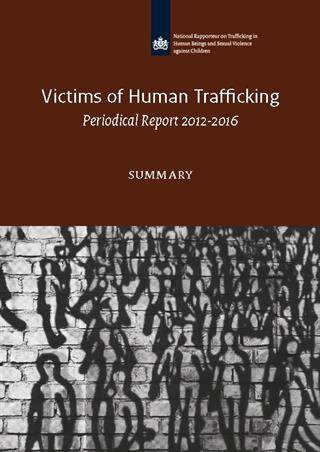Victims of Human Trafficking. Periodical Report 2012-2016. Summary
Domestic sex trafficking is the most common form of human trafficking in the Netherlands: each year there are approximately 3,000 victims. Dutch girls, specifically, make up a big group: annually 1,320 girls are victimized. They are also the least identified, which means they do not get the protection they need. This is presented in the publication Victims of Human Trafficking Periodical Report 2012-2016.
The estimated number of victims of human trafficking is five times as big as the number of identified victims and comes down to approximately 6,250 victims each year. This is the first time the Dutch National Rapporteur on Human Trafficking releases a substantiated estimate of the true number of victims of human trafficking, based on a research undertaken together with the United Nations Office on Drugs and Crime (UNODC). Up till now, it was only possible to report on the number of registered victims. The actual number is much higher, because human trafficking often takes place under the radar.
Only 11% visible
Domestic sex trafficking is the most common form of human trafficking in the Netherlands: each year there are approximately 3,000 victims, accounting for 46% of all human trafficking victims. Almost half of these (1,320) are minor girls. This group is also the least visible: only 11% is actually identified as a victim, and thus receives help and care.
Police reports decreasing
Three-quarters of all identified victims of domestic sex trafficking are identified and reported to CoMensha (an independent centre of expertise whose responsibilities include the national registration of possible victims of human trafficking in the Netherland) by the police. However, the number of victims detected by the police has declined sharply over the last five years – particularly in 2016. The decline in the number of reports by the police is likely connected with their reduced capacity to tackle human trafficking because of shifting priorities: their focus shifted to people smuggling in light of the increased flow of immigrants and refugees, and possibly also due to a loss of expertise as a result of the reorganization of the National Police since 2013. The National Rapporteur is worried about this: ‘We know that human trafficking is still a big problem: there are an estimated 6,250 victims. The efforts of the police to combat human trafficking should therefore be maximized.’

What is measured, is tackled
The National Rapporteur sees great value in measuring the nature and scale of human trafficking with an estimation like this, because it exposes the gaps and blind spots in the Dutch approach to combatting human trafficking. Not only for human trafficking as a whole, but also specified by sector of exploitation, gender and age. These new numbers are an important indicator for the way the government decides to counteract the issue. Also, the National Rapporteur urges the police and other authorities to keep working on solid registration, which is very important for informed and research-based policy. Furthermore, the Ministry of Justice and Security and the Ministry of Foreign Affairs are recommended to produce an estimate for human trafficking periodically, to make sure the results of new strategies to combat human trafficking will be monitored.